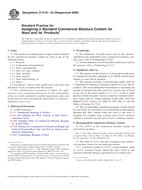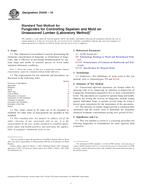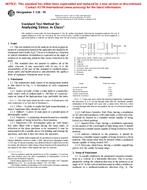1.1 The non-destructive procedure described in this practice induces a depression (strain) in the sealant, creating an elongation of the sealant and a stress on the adhesive bond at the sealant to joint substrate interface. The primary purpose of the practice is to reveal sealant adhesion anomalies not discernible by visual examination, at the time of the evaluation, which may affect air infiltration resistance, or water infiltration resistance, or both, of the sealed joint.
Note 1 – The nondestructive procedure may require immediate repair of the sealant bead, if failure is identified. Appropriate materials and equipment should be available for this purpose.
1.2 This practice is useful for the evaluation of adhesion of weatherseals in joints that are backed with compressible materials such as backer rod. This practice is not as useful in joints with solid backing.
1.3 The proper use of this practice requires a working knowledge of the principles of sealants as applied in movement joint applications.
1.4 A sealant fails to perform as a weatherseal when it allows air, or water, or both, to infiltrate the joint. This practice does not evaluate the performance of an installed sealant as a weatherseal. This practice is intended to only evaluate the characteristics of the adhesive bond in a particular installation.
Note 2 – In addition to identifying adhesion characteristics of the sealant joint, this practice may provide the user with an indication of other characteristics and anomalies including, but not limited to, changes in sealant depth, insufficiently sized or configured backer rods, cohesive failures, entrapped air voids, and solid contaminants. Anomalies of this nature may be interpreted and addressed by the evaluator.
1.5 The values stated in SI units are to be regarded as standard. No other units of measurement are included in this standard.
1.6 The committee with jurisdiction for this standard is not aware of any comparable standard published by other organizations.
1.7 This standard does not purport to address all of the safety problems, if any, associated with its use. It is the responsibility of the user of this standard to establish appropriate safety and health practices and determine the applicability of regulatory limitations prior to use.
Product Details
- Published:
- 07/01/2011
- Number of Pages:
- 4
- File Size:
- 1 file , 100 KB


